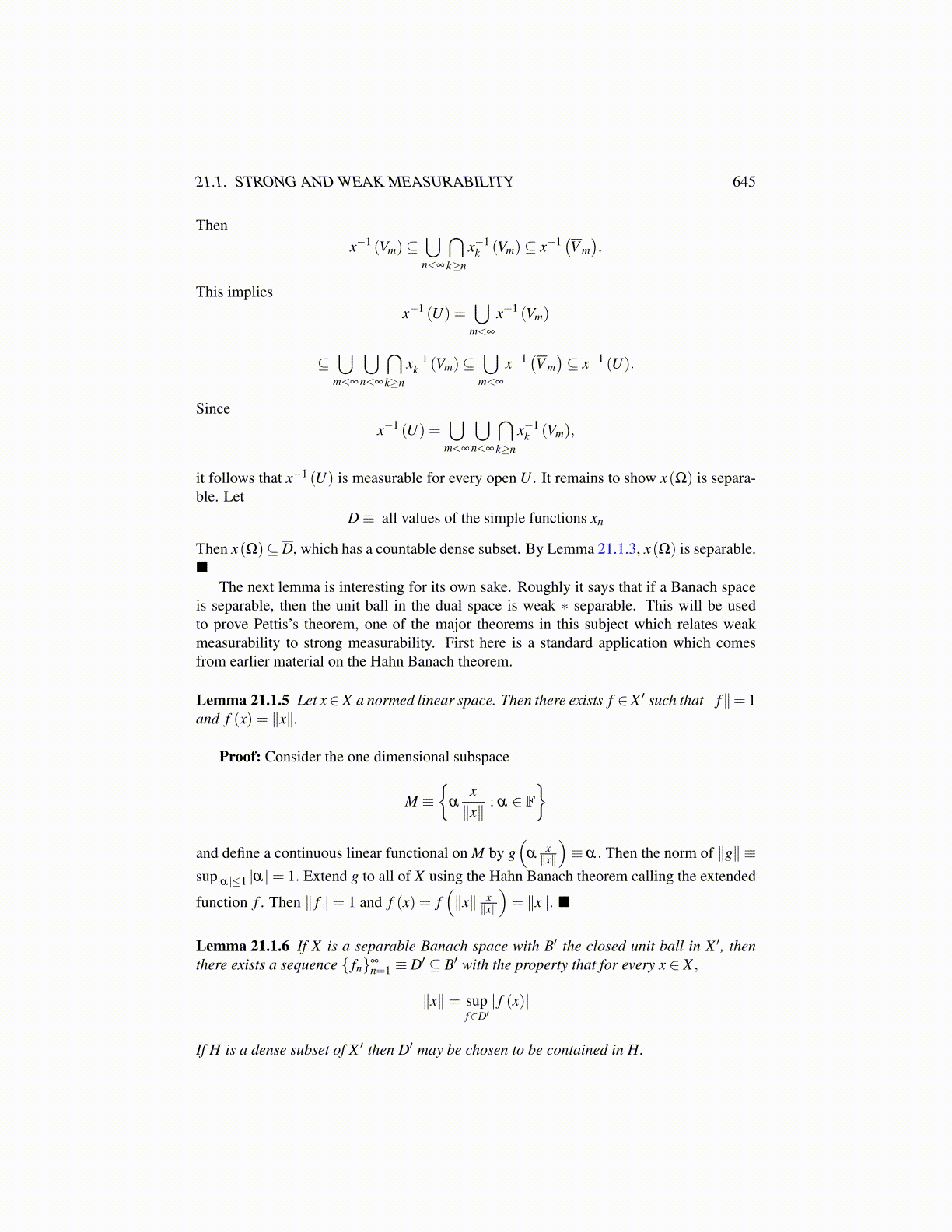
21.1. STRONG AND WEAK MEASURABILITY 645
Thenx−1 (Vm)⊆
⋃n<∞
⋂k≥n
x−1k (Vm)⊆ x−1 (V m
).
This impliesx−1 (U) =
⋃m<∞
x−1 (Vm)
⊆⋃
m<∞
⋃n<∞
⋂k≥n
x−1k (Vm)⊆
⋃m<∞
x−1 (V m)⊆ x−1 (U).
Sincex−1 (U) =
⋃m<∞
⋃n<∞
⋂k≥n
x−1k (Vm),
it follows that x−1 (U) is measurable for every open U . It remains to show x(Ω) is separa-ble. Let
D≡ all values of the simple functions xn
Then x(Ω)⊆D, which has a countable dense subset. By Lemma 21.1.3, x(Ω) is separable.
The next lemma is interesting for its own sake. Roughly it says that if a Banach spaceis separable, then the unit ball in the dual space is weak ∗ separable. This will be usedto prove Pettis’s theorem, one of the major theorems in this subject which relates weakmeasurability to strong measurability. First here is a standard application which comesfrom earlier material on the Hahn Banach theorem.
Lemma 21.1.5 Let x∈X a normed linear space. Then there exists f ∈X ′ such that ∥ f∥= 1and f (x) = ∥x∥.
Proof: Consider the one dimensional subspace
M ≡{
αx∥x∥
: α ∈ F}
and define a continuous linear functional on M by g(
αx∥x∥
)≡ α. Then the norm of ∥g∥ ≡
sup|α|≤1 |α|= 1. Extend g to all of X using the Hahn Banach theorem calling the extended
function f . Then ∥ f∥= 1 and f (x) = f(∥x∥ x
∥x∥
)= ∥x∥.
Lemma 21.1.6 If X is a separable Banach space with B′ the closed unit ball in X ′, thenthere exists a sequence { fn}∞
n=1 ≡ D′ ⊆ B′ with the property that for every x ∈ X ,
∥x∥= supf∈D′| f (x)|
If H is a dense subset of X ′ then D′ may be chosen to be contained in H.